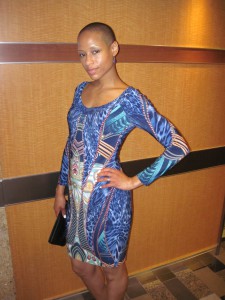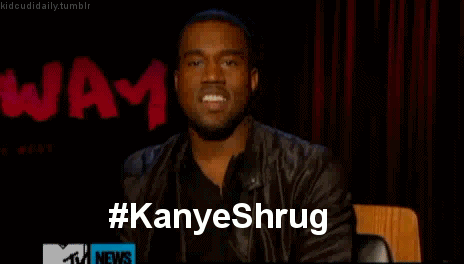I am so fortunate to have talented curl-friends who take time out of their busy schedules to pen thoughtful, touching posts about their personal experiences being natural and raising little curly girlies of their own. Please enjoy this post by Shawri King-Casey, who reminds us that our children are always paying attention, even when we don’t realize, reminding us that every moment is a teachable moment.
SUPERNATURAL
The head-scarf clad, older brown woman eyed my daughter wistfully as she fingered Miss G’s long, silky braids that grazed the waistband of G’s bright pink tutu. The woman sighed and clucked thoughtfully.
“Beautiful. Just beautiful. You are so lucky,” she purred. “Your daughter’s got good hair. You got pretty hair, too. You got Indian in your family?”
I visibly winced and said firmly, “All hair is good hair. If it’s growing out of her scalp, it’s good hair.”
She shook her head violently and shot me a side eye. Her words were both accusatory and resentful.
“You know what I mean.”
What she meant, of course, was that my daughter’s multiracial hair is more wavy than curly. Not kinky. What she meant was that her hair moved in the wind, grew down and not out and resembled more the coifs of my husband’s ancestors, rather than mine.
I instinctively shielded my daughter’s head with my hands, turned G away from the conversation and looked into her questioning eyes.
“C’mon G. Tell the nice lady goodbye and let’s go.” I said through gritted teeth.
I remember walking away from this sister in the grocery parking lot, with my then four year old daughter, G in tow and my newborn daughter slung across my hip, asleep.
G, unaware of the context behind the terse exchange I had with the woman who looked very much like me, said, “Mama, you’re squeezing my hand too hard. It hurts.” I hadn’t realized until that very moment that my jaw was clenched and my grip had tightened with her small hand inside. “Oh sweetie, Mama’s sorry. I didn’t realize I was squeezing your hand.”
G blinked and cocked her head to the side, “Mama, what did that lady say to make you upset?”
What did the lady say really? I mean, she certainly wasn’t the first to admire the mass of silky golden-brown waves my eldest daughter possessed. It was almost curiously magnetic, the way people would reach out to touch her hair or finger her curls as they admired their spring and luster. I had to admit G’s hair was basically a watered down version of my own coils and I couldn’t really decipher the mixed emotions I felt when people complimented her hair. First, I suppose I felt ridiculous for even accepting praise for it, as if the credit were mine to receive. G’s hair was a genetic cocktail of 46 chromosomes from me and her father and along with those luscious waves came near-sightedness, crooked teeth and flat feet. My sister’s hair is very much like G’s and I also very painfully remember how people would ooh and ahh over my sister’s silky mane and say nothing about my spirally poof of a ponytail.
And that, in all honesty, was the flash point triggered by that older woman’s comment.
I was very well aware of this underlying desire to deem kinky, coily and highly textured hair as “bad,” and anything that was the anti-thesis of that was considered, “good.” I want my children to love their hair, because it was the hair God gave them – that I gave them, that their dad gave them. It wasn’t “good” in the sense that it was any better than anyone else’s simply because it lacked elements most considered a barrier to styling and maintenance. It wasn’t “good” because it would bend with the slightest wind. It was “good” because it was shiny – its sheen a tribute to my insistence on balanced nutrition and proper hygiene. It was “good” because I kept it brushed and braided, free of dust and lint. It was “good” because it was clean and conditioned well and regularly trimmed. But mostly, it was “good” because it was uniquely hers.
I want my daughters to associate positivity with their hair not because it is a particular texture, but because it does what hair is supposed to do – frame their face, keep their heads warm and provide an enhancement to their natural beauty. However, I want them to celebrate the versatility of textured hair in its full spectrum, from the slightest wave to the tightest z. I don’t want my girls feeling their texture is any more or less superior to anyone else. I don’t want them thinking it is necessary to satisfy the curious tactile onlooker who is mesmerized by the twists and turns their hair makes naturally. I want them to embrace all the wonderful things they can do with their hair, from wearing it stick straight to braids with beads and fro’ed out. Their hair can be manipulated into popular styles from all of the cultures and racial categories they inhabit.
It is healthy.
It is strong.
It is their crown.
It is better than good, not because of the genetic incident of its appearance, but because it’s theirs.
There are no medal winners for hair texture in this world and those of us who would compare hair-types 2a to 4z need more than a proverbial hot comb to straighten our mental kinks out. Because it’s not what’s on our head that’s important.
It’s what’s in it.
 Culinary whiz. Wordsmith. Super Mom. These are just a few of the many words that could be used to describe Shawri. Not only is she a dynamic attorney generalist with thirteen years of experience both in the public and private sectors, she’s a fierce naturalista you should know!
Culinary whiz. Wordsmith. Super Mom. These are just a few of the many words that could be used to describe Shawri. Not only is she a dynamic attorney generalist with thirteen years of experience both in the public and private sectors, she’s a fierce naturalista you should know!






